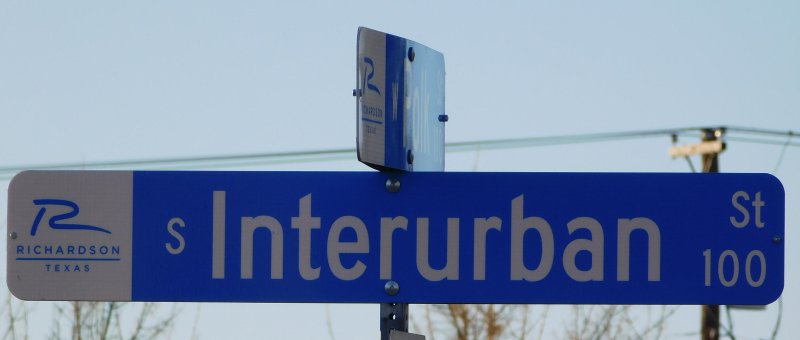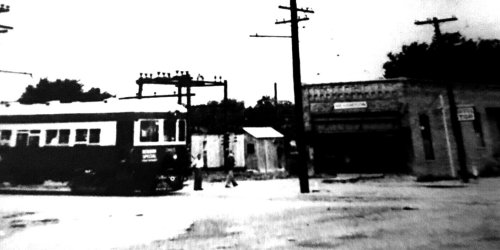Return to Home Page or Historic Sites
Locations
SITE OF INTERURBAN STATION
|
|
From the forthcoming book, RICHARDSON: A History of One of the Biggest Small Cities in Texas
In 1908, a new form of transportation literally arrived in Richardson. Looking a little like a street car on steroids, for the next forty years the Interurban was the preferred means of travel for many area residents, especially those without autos. The first Interurban in the United States began operating in 1889 in Ohio. However, owing to the depression of the 1890s and the large amount of capital that needed to be raised for such an undertaking, it wasn't until just after the dawn of the twentieth century that the very first line in North Texas, spanning the ten-mile distance from Sherman to Denison (or vice-versa) began operating.
Like streetcars of the late nineteenth and early twentieth centuries, the Interurban, which closely resembled a street car, only larger, was powered by electricity, which interestingly was provided by direct current, rather than the alternating current then being championed by inventor Nicola Tesla and commonplace throughout the world today. Regardless, we might think of an Interurban car a sort of "green machine" since the car itself emitted no fumes or smoke (although coal was burned by power plants to generate the electricity that made it run). Unlike street cars, however, the Interurban offered travelers a convenient, inexpensive, and relatively fast way to travel outside of and in-between cities, not just within them.
Today, the only tangible evidence of the Interurban in Richardson is the name "Interurban Street" on signposts in old downtown Richardson. Why? Because almost immediately following the discontinuance of service at the end of 1948, the Texas Electric Railway lost no time selling off its property and dismantling its tracks. No doubt the rails, made of 80-pound steel in thirty-three-foot lengths, brought a fair return as scrap metal.

On January 14, 1949, only two weeks after the Interurban ceased service, The Richardson Echo reported that both the right-of-way and the depot had already been sold, as well as the traction company's "sheds, loading platforms and adjoining vacant lots, lying mostly in the Greer branch, fronting the Pool home," for which a man named J. C. Handley had paid a little more than $4,000. The Interurban building's new owner was Bill Casina, "agent for the company during its last years," who paid just a little over $1,000 for the historic property. The paper added that Casina, then agent for the Continental Bus Line, planned to use the building from which to sell bus tickets, However, less than two months later, The Echo announced that the newly-opened "Bus Stop Café," operated by Mr. and Mrs. J. E. Ford and located in the Margaret Cain Building, would not only be selling Continental bus tickets, but also providing travelers with meals. As the café's name implied, it was also the place in Richardson where passengers could embark and disembark from buses, which provided service not only to downtown Dallas, but also points beyond.
The Bus Stop Café did not last long though. On Friday, March 23, 1951, The Echo reported that it had been destroyed by fire. The paper added that firefighters summoned to the scene were also unable to save the Trapahagen Garage, in the rear of the Cain Building, to which the fire had spread.
In the meantime, the old Interurban building had been repurposed as the Richardson Auto Supply store. In 1958, the name was changed to Economy Auto Supply.
Finally, in late March 1966, The Echo reported that the old depot (built in 1909) was about to be demolished, which it was, to make way for a brand-new Firestone auto repair and tire store. Thus, like the old H.&T.C. depot, another historic landmark, succumbed to progress, as the newspaper put it, and from all appearances, no one, or at least no one with any influence, tried to stop it from happening.
LOCATION: The Interurban depot was located on the southwest corner of Belt Line Road/Main Street and Interurban Street, where (as of this writing) there is a vacant, former Firestone Tire Store.
This website copyright © 2021 (except where noted) by Steven Butler, Ph.D. All rights reserved.


